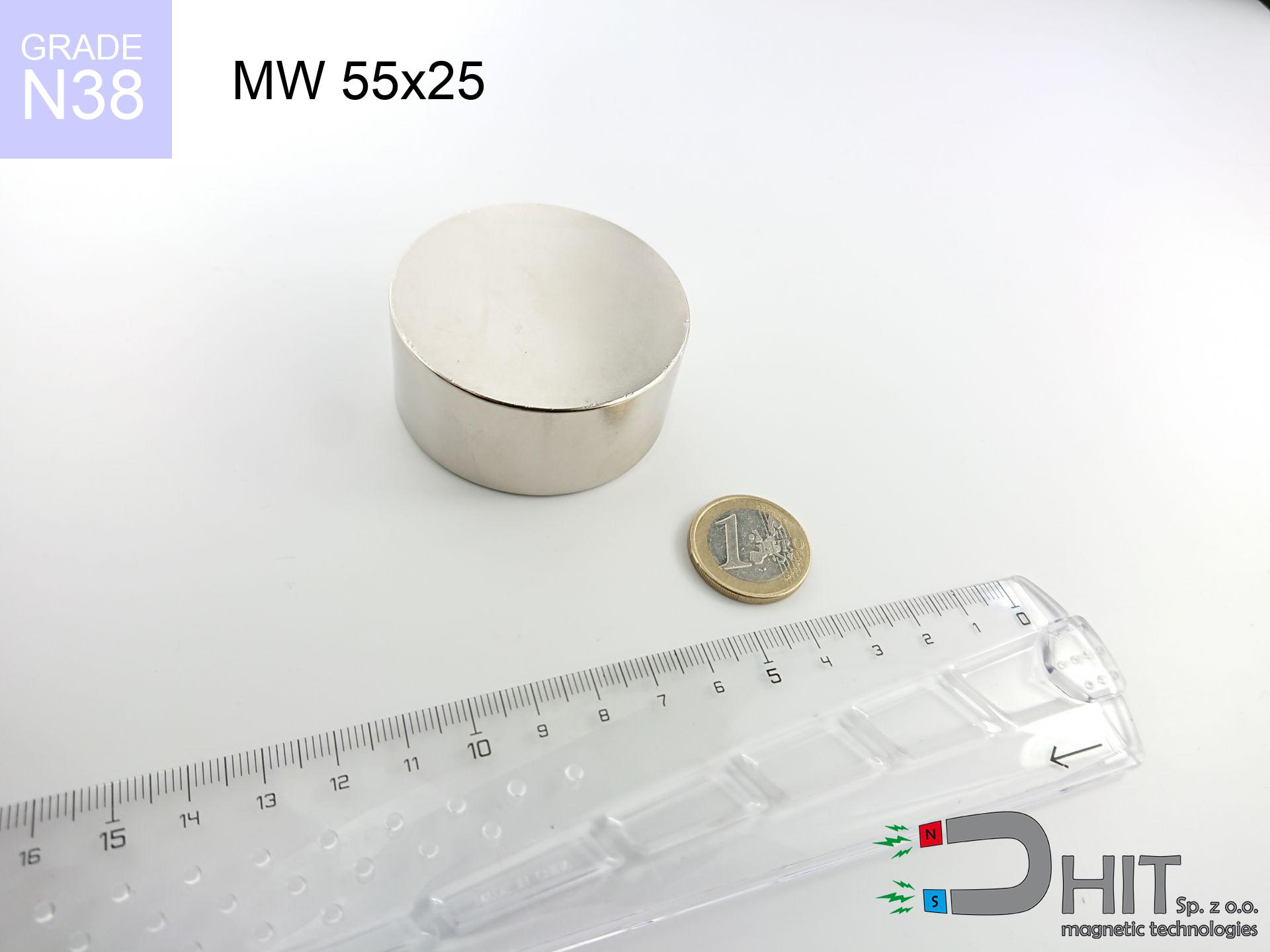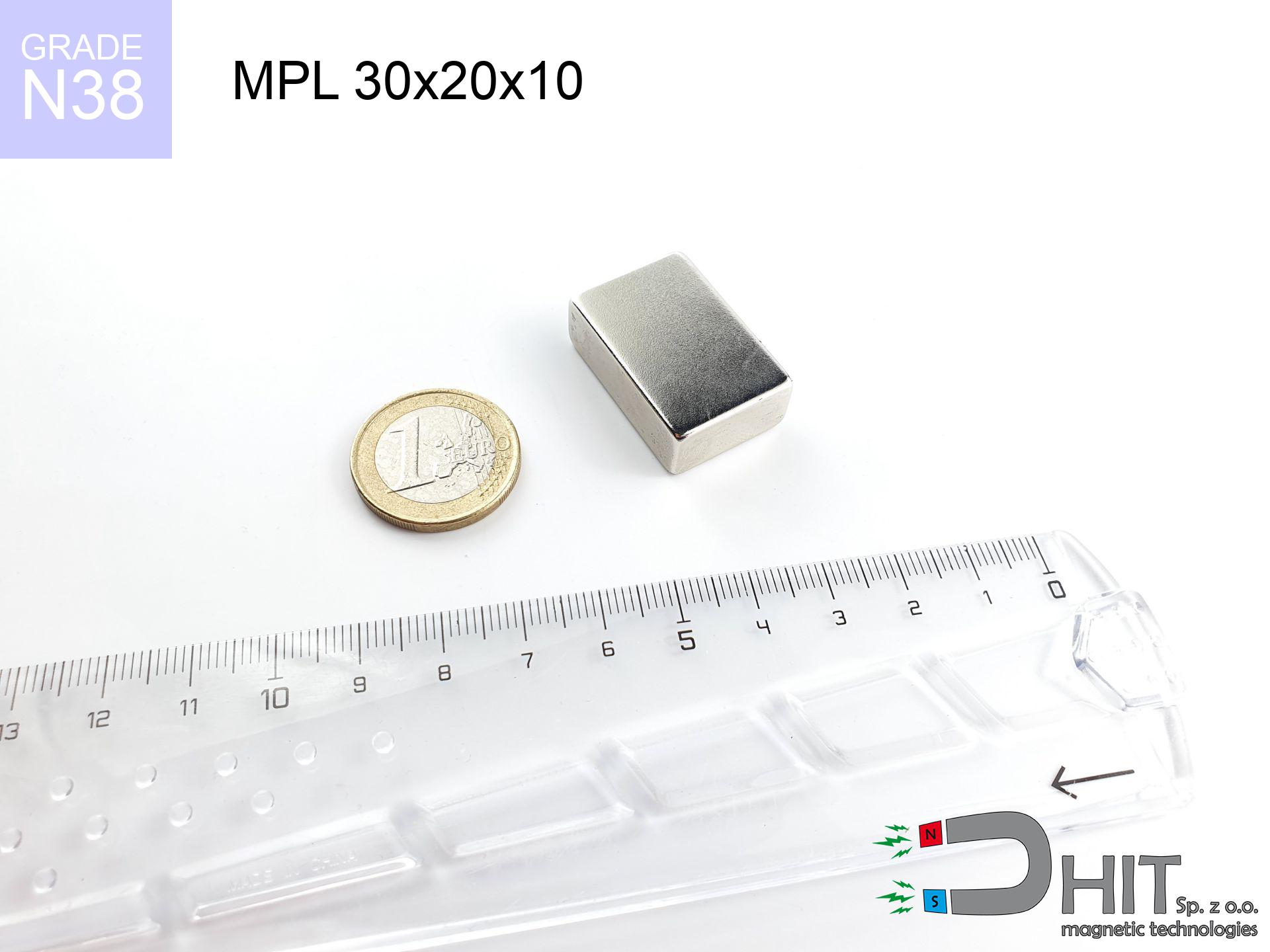SM 32x300 [2xM8] / N42 - magnetic roller
magnetic separator
catalog number 130300
GTIN: 5906301812937
diameter Ø
32
mm [±0,1 mm]
height
300
mm [±0,1 mm]
max. temperature
≤ 80
°C
catalog number 130300
GTIN: 5906301812937
diameter Ø
32 mm [±0,1 mm]
height
300 mm [±0,1 mm]
max. temperature
≤ 80 °C
897.90 ZŁ gross price (including VAT) / pcs +
730.00 ZŁ net price + 23% VAT / pcs
bulk discounts:
need more quantity?Want a better price?
Give us a call tel: +48 22 499 98 98 or write via form on the contact page. You can check the lifting capacity and the appearance of magnet in our magnetic mass calculator magnetic calculator
Orders placed by 2:00 PM will be shipped on the same business day.
Specification: magnetic separator 32x300 [2xM8] / N42
Magnetic properties of the material N42
Physical properties of sintered neodymium magnets Nd2Fe14B
List recommended items
Advantages and disadvantages of neodymium magnets NdFeB.
In addition to immense power, neodymium magnets have the following advantages:
- They do not lose power over time - after 10 years, their strength decreases by only ~1% (theoretically),
- They are highly resistant to demagnetization by external magnetic field,
- Thanks to the shiny finish and nickel, gold, or silver coating, they have an aesthetic appearance,
- They exhibit very high magnetic induction on the surface of the magnet,
- Thanks to their high temperature resistance, they can operate (depending on the form) even at temperatures up to 230°C and above...
- Thanks to the flexibility in shaping and the ability to adapt to specific requirements – neodymium magnets can be produced in many variants of shapes and sizes, which enhances their versatility in applications.
- Key role in advanced technologically fields – find application in hard drives, electric motors, medical apparatus or other modern machines.
Disadvantages of neodymium magnets:
- They can break when subjected to a powerful impact. If the magnets are exposed to impacts, we recommend using magnets in a steel housing. The steel housing in the form of a holder protects the magnet from impacts, and at the same time increases its overall strength,
- High temperatures can reduce the power of neodymium magnets. Typically, after heating above 80°C, most of them experience a permanent reduction in strength (although it is dependent on the form and size). To prevent this, we offer special magnets marked with the symbol [AH], which are highly resistant to high temperatures. They can operate even at temperatures up to 230°C, making them an ideal solution for applications requiring high-temperature operation,
- Magnets exposed to a humid environment can corrode. Therefore, when using them outdoors, we suggest using waterproof magnets made of rubber, plastic, or other moisture-resistant materials,
- Limited ability to create threads or complex shapes in the magnet - the use of a housing is recommended - magnetic holder
- Potential hazard to health from tiny fragments of magnets can be dangerous, when accidentally ingested, which is crucial in the context of child safety. It's also worth noting that miniscule components of these devices have the potential to complicate diagnosis after entering the body.
Handle with Care: Neodymium Magnets
If you have a nickel allergy, avoid contact with neodymium magnets.
Studies show a small percentage of people have allergies to certain metals, including nickel. An allergic reaction often manifests as skin redness and rash. If you have a nickel allergy, try wearing gloves or avoid direct contact with nickel-plated neodymium magnets.
Magnets made of neodymium are extremely fragile, resulting in breaking.
Neodymium magnetic are delicate as well as will break if allowed to collide with each other, even from a distance of a few centimeters. They are coated with a shiny nickel plating similar to steel, but they are not as hard. In the case of a collision between two magnets, there can be a scattering of small sharp metal fragments in different directions. Protecting your eyes is essential.
Dust and powder from neodymium magnets are flammable.
Do not attempt to drill into neodymium magnets. Mechanical processing is also not recommended. If the magnet is crushed into fine powder or dust, it becomes highly flammable.
Neodymium magnets can become demagnetized at high temperatures.
Although magnets have shown to retain their effectiveness up to 80°C or 175°F, this temperature may vary depending on the type of material, shape, and intended use of the magnet.
Neodymium magnets are the most powerful magnets ever invented. Their power can shock you.
On our website, you can find information on how to use neodymium magnets. This will help you avoid injuries and prevent damage to the magnets.
Neodymium magnets should not be near people with pacemakers.
Neodymium magnets generate very strong magnetic fields that can interfere with the operation of a pacemaker. This happens because such devices have a function to deactivate them in a magnetic field.
Do not bring neodymium magnets close to GPS and smartphones.
Neodymium magnets produce intense magnetic fields that interfere with magnetometers and compasses used in navigation, as well as internal compasses of smartphones and GPS devices.
Keep neodymium magnets away from TV, wallet, and computer HDD.
Strong fields generated by neodymium magnets can damage magnetic storage media such as floppy disks, credit cards, magnetic ID cards, cassette tapes, video tapes, or other similar devices. In addition, they can damage televisions, VCRs, computer monitors, and CRT displays. Avoid placing neodymium magnets in close proximity to electronic devices.
Neodymium magnets can attract to each other, pinch the skin, and cause significant injuries.
In the situation of holding a finger in the path of a neodymium magnet, in such a case, a cut or even a fracture may occur.
Magnets are not toys, youngest should not play with them.
Not all neodymium magnets are toys, so do not let children play with them. In such a situation, surgery is necessary to remove them. In the worst case scenario, it can result in death.
In order for you to know how strong neodymium magnets are and why they are so dangerous, see the article - Dangerous powerful neodymium magnets.

![SM 32x300 [2xM8] / N42 - magnetic roller SM 32x300 [2xM8] / N42 - magnetic roller](https://cdn3.dhit.pl/graphics/products/sm-32x300-2xm8-pel.jpg)
![magnetic beam 380x180x70 [4x M8] magnetic beam 380x180x70 [4x M8]](https://cdn3.dhit.pl/graphics/products/bm-380x180x70-4x-m8-wex.jpg)

![magnetic separator 32x350 [2xM8] / N52 magnetic separator 32x350 [2xM8] / N52](https://cdn3.dhit.pl/graphics/products/sm-32x350-2xm8-fag.jpg)


